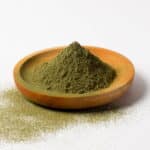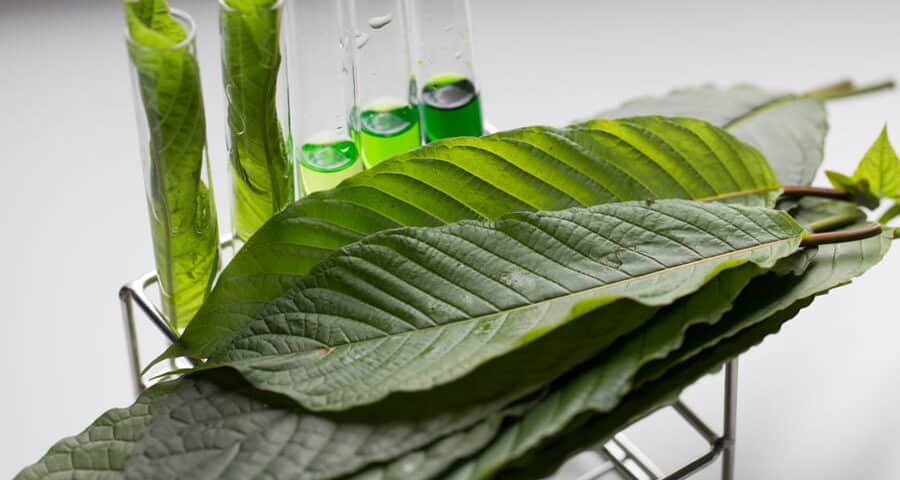
The Impact of Covid-19 on Kratom Shipping and Availability
April 19, 2021
Kratom Shelf Life: Does Kratom Ever Expire?
May 3, 2021If you have done some kratom shopping online, you’ve likely come across wording mentioning “kratom lab testing.” Some vendors simply state that their kratom is lab-tested, others also include lab test results on their website or make them accessible via a scannable QR code on the packaging.
The American Kratom Association actively lobbies the Kratom Consumer Protection Act to individual states, and one of the requirements included in it is lab testing.
So, you know that lab test results are important. You may have even looked them up. That’s not the issue.
The problem is to understand what you are looking at. After all, not everyone out there is a biologist, and there have been issues related to contaminated kratom. How do you know if the lab test result is legitimate and the kratom you are about to buy passes the test?
One of our main values as a kratom vendor is transparency; so, let’s break things down.
Tips to Read and Understand Kratom Lab Test Results
1. Look for an Independent and Accredited Third-Party Lab
Lab test results should be performed by an independent and accredited third-party laboratory rather than the vendor themselves. Why so?
Trustworthiness and credibility.
Independent testing by a third-party laboratory is a rather expensive service. There is also a risk of kratom not passing the tests which would require the vendor to discard the entire batch, likely worth thousands of dollars. Nonetheless, it provides reliable results and ensures the purity and authenticity of products.
An independent third-party lab does testing a business activity. They do not have ties to a particular vendor and no interest in faking the results. If, however, a vendor or manufacturer has an in-house lab and states they test their kratom there, the authenticity of the lab test results may be questionable.
So, take a look at where the product has been tested. The name of the lab should appear at the top of the Certificate of Analysis. You can even take an extra step to locate the lab online and verify whether it is a legitimate business that tests kratom products.
The vendor should be listed as a client or customer. That’s where you can verify that the lab test results are authentic rather than stolen. That, too, can happen, by the way.
2. Verify that the Strain is Accurate and Lot Number Is Listed
A kratom vendor should not just test a sample. They should test a sample of each strain and each batch that they receive.
Therefore, lab test results should list the strain tested and the respective lot number rather than something generic such as “kratom powder” or “Mitragyna speciosa.”
Make sure that the name of the strain that you are willing to purchase coincides with the name on the lab test results available and a lot number appears next to it.
For example, if you take a look at our kratom lab testing results, you’ll not only be able to see the name of the respective strain and its lot number, but also a photo of the sample’s packaging. This way, you can verify that it’s our kratom that has been tested as well as which strain the results are for.
If you see something generic instead, one of the following may have occurred:
- The vendor may have tested a single sample from the entire shipment of multiple batches and strains to save on testing changes. This means that the shipment may still contain contaminated kratom that simply has not been tested.
- Or, they may have mixed in small amounts of various strains into one sample to be tested. So, if the shipment happened to contain a contaminated batch, it would have been diluted by samples of other strains. The sample would contain traces of pathogens and would likely be able to pass testing, but the specific batch that contaminated kratom came from would still remain unfit for sale.
3. Check the Dates of the Kratom Lab Test Results
While the pandemic has slowed down operations of kratom vendors, the dates of kratom lab test results should be relatively recent.
If you know that the vendor has recently imported new kratom but the dates on the lab test results are old, it may be because the latest batch hasn’t been tested. Nonetheless, it’s also possible that the vendor may have not updated those yet, especially if it’s a really small business with one or a few employees.
If in doubt, don’t hesitate to reach out to them and verify. A vendor who employs ethical business practices and truly cares about the wellbeing of their customers should not have an issue providing those.
4. Look at the Alkaloid Content
The Kratom Consumer Protection Act requires vendors to list mitragynine and 7-hydroxymitragynine content on the packaging. Moreover, certain states may also require 7-hydroxymitragynine content must be under 2% of the total alkaloid content.
You cannot get accurate data on this without proper testing of each strain and each batch.
Keep in mind that KCPA text is not uniform and requirements can vary from state to state. To know what exactly a specific vendor needs to do and whether they comply with the KCPA of their state, you should review the KCPA wording in the state where the vendor is based.
Some states require only primary alkaloid content to appear on the packaging. Other states may require for 7-hydroxymitragynine to be no more than 2% of the total alkaloid content.
If the state’s KCPA requires 7-hydroxymitragynine to be under 2%, it refers to the total alkaloid content. Kratom powder has more than just alkaloids, so the percentage indicated in the latest lab test results will be much lower. Therefore, when looking at kratom lab test results, 7-hydroxymitragynine content must be under 0.100%.
If the numbers are considerably higher than what the state’s KCPA permits, you may be looking at an artificially enhanced product that may be unsafe to purchase.
5. Review the Information on Pathogens
Kratom lab testing results should include information on the following pathogens:
- Coliforms – a group of bacteria present in plant material,
- Mold – mold spores can be toxic to humans and can cause allergies, poisoning, or other negative reactions,
- Salmonella – exposure to it can result in a salmonella infection,
- E.coli – not washing your hands after handling contaminated kratom can transfer the bacteria to your mouth and cause a gastrointestinal infection,
- Yeast – yeast is a form of fungus and may contain mold toxins,
- Staphylococcus aureus – bacteria that can cause staph infections.
Pathogens may be present in minimal amounts that a healthy human immune system is more than capable to handle without causing any issues. Nevertheless, if the pathogens exceed the permitted limits, the product is unfit for sale.
Below are the specifics on the limits required for the product to pass the test:
- Coliforms – under 10,000 CFUs (colony forming units) per gram,
- Mold – under 100,000 CFUs per gram,
- Salmonella – not detected in 25 grams
- E. coli – not detected in 10 grams
- Yeast – under 100,000 CFUs per gram,
- Staphylococcus aureus – not detected in 10 grams
6. Check If There Are Heavy Metals Present
Heavy metals are another class of dangerous substances that can be present in kratom. They are widely available in the environment around us and can get into kratom from soil and water as well as during the manufacturing process.
Heavy metals in kratom have been a topic that reached the news. In spring 2019, the FDA tested 30 different kratom products from various vendors, including some very popular ones, and found dangerous levels of nickel and lead in them.
Kratom lab testing looks at the presence of lead, cadmium, arsenic, and mercury. Below are thresholds of heavy metals that are acceptable in kratom products:
- Lead (Pb) – below 1.2 PPM (parts per million),
- Arsenic (As) – below 2 PPM,
- Cadmium (Cd) – below 0.85 PPM,
- Mercury (Hg) – 0.41 PPM
While it may seem alarming that there are heavy metals in kratom even if in small amounts, traces of them may be present and impossible to avoid or eliminate. However, when their levels are high, they can become dangerous to human health.
Conclusion
Kratom lab test results may seem confusing. However, understanding what you are looking at can help you decide whether a product is safe to purchase or not.
If you would like to buy pure and lab-tested kratom, we invite you to take a look at our kratom products. You can review our latest lab testing results here.






